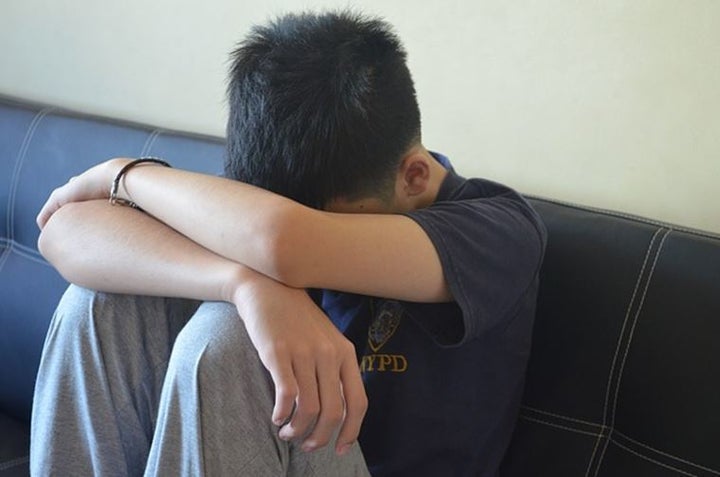
It's almost impossible to turn on your computer or open the paper and not read a bullying or an online harassment story.
Too frequently we hear of tragedies such those that involved Daniel Fitzpatrick, Tyler Clementi, Amanda Todd and Jessica Logan.
Parents, teens, kids, teachers and communities continuously search for answers, believe that we can do better, if we can only reach that one child. Maybe we can -- maybe we are.
Cyberbullying Research Center, founded by Dr.'s Sameer Hinduja and Justin Patchin, recently released their latest findings on bullying and cyberbullying. They surveyed 4500 12-17 year-olds nationally.
When gathering data regarding school bullying for their study, the definition of “bullying” they provided participating students was this:
“Bullying is when someone repeatedly threatens, harasses, mistreats, or makes fun of another person (on purpose) at school.”
With this in mind, 73% of students reported they had been bullied at school at some point in their lifetime.
In the past 30 days, 44% had been bullied. Among them, 88% said they were called mean names or were made fun of in a hurtful way, while 77% said they were excluded from groups or left out of things. Shockingly, according to this study, one out of five said they had been threatened with a weapon at school.
When it comes to gender, girls were slightly more likely to have been bullied at school, while boys were more likely to have bullied others.
As the survey continued to online bullying, Hinduja and Patchin provided this definition of “cyberbullying”:
“Cyberbullying is when someone repeatedly threatens, harasses, mistreats, or makes fun of another person (on purpose) online or while using cell phones or other electronic devices.”
With this definition in mind, interestingly 34% of the students said they had experienced cyberbullying in their lifetime, while 17% said it happened to them within the last 30 days. Notably, nearly two-thirds (64%) of the students who experienced cyberbullying stated that it really affected their ability to learn and feel safe at school.
12% of the students admitted that they had cyberbullied others at some point in their lifetime (6% in the previous 30 days). The most commonly reported behaviors included spreading rumors online (60%), posting mean comments online (58%), or threatening to hurt someone online (54%).
Defining mean, rude and bullying.
We often get confused by these terms, especially with people overusing the term “bully” almost daily. As Cyberbullying Research Center points out, when the students are given a clear definition, they provide a clearer picture of what is actually happening in schools and online.
Obviously school bullying at 73% is much higher than online bullying at 34%, contrary to what many believe. However, we are most likely witnessing mean and rude behavior digitally rather than bullying. Neither is acceptable.
In Signe Whitson's latest book, The 8 Keys to End Bullying Activity Book, renowned children's author Trudy Ludwig and bullying prevention expert, uses these definitions:
Rude = Accidentally saying or doing something hurtful.
Rude behaviors include:
- Burping in someone’s face
- Butting in line
- Bragging about making a team
Mean = Saying or doing something to hurt a person on purpose, once or maybe twice.
The main difference between “rude” and “mean” behavior is that rudeness is usually unplanned. Mean behavior, on the other hand, is done on purpose.
Mean behaviors include:
- Making fun of what someone looks like or what he or she is wearing.
I don’t like your short hair. You look like a boy.
Why did you wear that dress?
- Insulting someone’s intelligence or ability.
You’re so stupid.
You stink at soccer.
- Saying or doing something unkind after a fight with a friend.
Saying, “I hate you.”
Taking something that doesn’t belong to you.
Make no mistake; mean behaviors are very hurtful and should be avoided at all times! Still, meanness is different from bullying in important ways that we’ll talk about next.
Bullying = Cruel behavior, done on purpose and repeated over time, that involves an imbalance of power.
To best understand bullying, remember the 3 P’s:
1. It is done on Purpose; there is nothing “accidental” or unplanned about bullying.
2. It is a Pattern; the cruelty happens over and over again.
3. It is all about Power; the cruel person has more control and influence than his/her target.
Kids who bully say or do something purposefully hurtful to others and they keep doing it again and again with no sense of guilt or shame. Kids who bully have more power than the kids they pick on. This power may come from being older, stronger, or bigger in size, or it may come from getting several kids to gang up on one target, to make that target feel hurt and alone.
Takeaway tips:
· Your offline and online manners matter. Mean or rude are never acceptable.
· Read the full report at Cyberbullying Research Center.
· Be proactive. Check out the 8 Keys to End Bullying Activity Book for kids and tweens.
· Schools and communities can be part of solution. Be part of No GrownUps Left Behind.
· Take the pledge to be an Upstander.
